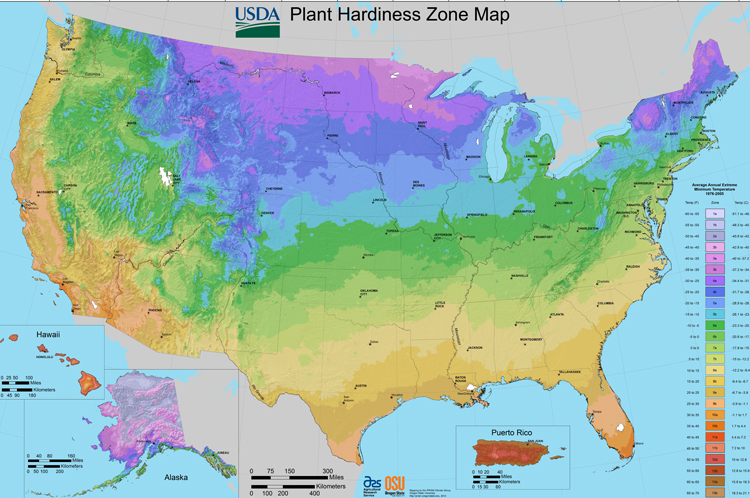Home > Lifestyle > Garden > Get in the Gardening Zone With USDA Plant Hardiness Map
Get in the Gardening Zone With USDA Plant Hardiness Map
If you’re new to gardening, you’ll want to take a look at the U.S. Department of Agriculture’s (USDA) Plant Hardiness Zone Map. The map is the standard by which gardeners and growers can determine what plants are most likely to endure winter temperatures at a given location.

The USDA Plant Hardiness Zone Map is based on the average annual minimum winter temperature. While the zones do represent the average annual extreme minimum temperatures at a given location during a 30-year period in the past, they do not reflect the coldest it has ever been or ever will be at a specific location.
The USDA zone map was last updated in 2012, and the new version of the map includes 13 zones, with the addition for the first time of zones 12 (50-60 degrees Fahrenheit) and 13 (60-70 degrees Fahrenheit). Each zone is a 10-degree Fahrenheit band, further divided into 5-degree Fahrenheit zones “A” and “B.” The new map was jointly developed by USDA’s Agricultural Research Service (ARS) and Oregon State University’s (OSU) PRISM Climate Group.
See more: Spring Gardening Guide
The USDA zone map also offers a Geographic Information System (GIS)-based interactive format and is specifically designed to be Internet-friendly. The map website also incorporates a function that allows gardeners to find their zone by ZIP code.
Zone hardiness is a handy thing to know, but don’t be frustrated when a plant dies, and certainly don’t give up trying to grow that particular plant again. Growing plants can be very complex, and many environmental factors can impact the winter hardiness of a plant – wind, soil type, soil moisture, humidity, pollution, snow and winter sunshine to name a few. Individual gardens may even have localized microclimates that may be warmer or cooler than the general zone for your area, so no hardiness zone map can take the place of the detailed knowledge that gardeners pick up about their own gardens through hands-on experience.



